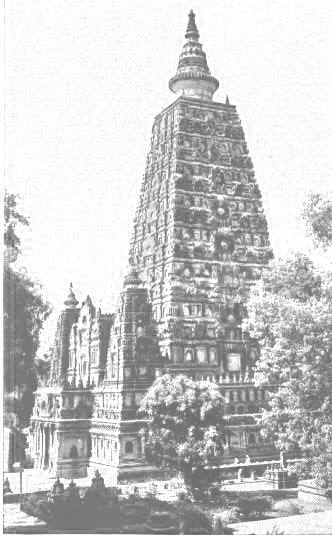Gaya is located at a distance of 105 km from Patna in the
state of Bihar. Buddha Gaya is located 7 miles south of Gaya and is one
of the well visited Buddhist pilgrimage centers of the Indian subcontinent.
There are four sacred Buddhist pilgrimage centers in
the Indian subcontinent. The first of these is the birthplace of Buddha at Lumbinivana,
east of Kapilavastu. The second most sacred place of pilgrimage is Buddha Gaya
where he attained enlightenment. The third most sacred pilgrimage center for Buddhists is Sarnath or Isipatan where Buddha delivered his first sermon, and
the fourth is Kushinara or Kashia in Uttar Pradesh, where he finally gave
up his mortal self.

The Bodhi tree under which the Buddha
attained enlightenment is considered to be the among the oldest and the most venerated
tree in the world. This tree is said to be a descendant of the original tree, a branch of
which was transplanted at Anuradhapura in Sri Lanka during the period of
Emperor Ashoka the great. It is believed that Emperor Ashoka's Guru
Upagupta led him to various holy sites in the Buddhist tradition,
including this tree at Gaya.
Buddha Gaya is also home to the ancient temple of
Buddha. The Mahabodhi temple has a 150 feet high tower, and it contains a
gilded image of Buddha. The original shrine here is believed to have been raised by
Emperor Ashoka. The temple has a beautiful stone railing around it. Depcited on the walls
of the temple are scenes from Buddha's life. A museum in the vicinity has gold, bronze and
stone images of Buddha.
The Vajrasana-platform where Buddha
performed his penance is located below the Bodhi tree, and this spot is described as the
center of the Universe. The spots where he spent seven weeks have seven shrines, built by
devout Buddhists from several countries.
Several Buddhist relics have been unearthed in this
area. Other places of interest here include the Tibetian, Japanese and Burmese
monasteries. The Tibetian monastery houses the massive Dharma Chakra or
the wheel of law. Millions visit Buddha Gaya from all over the world.
The Chinese traveller Hyuen Tsang of the seventh
century CE, has described Buddha Gaya in detail in his travel accounts where he writes
about the monasteries that thrived in this region.
